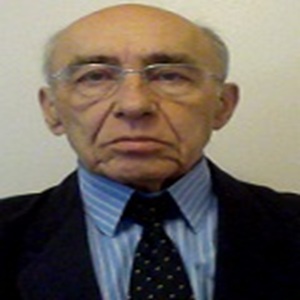Abstract Detail

Igor Klepikov
United States
Abstract
Sepsis (S) has now become a global problem, taking a confident position among the situations leading in morbidity, mortality, volume of physical and material costs (1). The main source of S for many years has been acute non-specific inflammation in the lungs (ANSIL) or acute pneumonia (AP), which has recently become the cause in 60 percent or more (2,3). Diagnosis of S is carried out according to uniform schemes, regardless of the type and localization of the inflammatory process. At the same time, the fact that AP is the only process whose onset is associated with the vessels of the pulmonary circulation, which creates collisions of pulmonary blood flow, especially in severe cases of the disease, is completely ignored. Violation of blood flow in one of the circulatory circles, which have directly opposite indicators, serves as a trigger for the automatic activation of autonomous adaptation systems capable of maintaining vital proportions and synchronicity of the heart. In the case of aggressive development of AP, compensatory restructuring of the systemic circulation corresponds to the picture and generally accepted parameters of S and septic shock (SS). However, these disorders are of pulmonogenic rather than septic origin, which is not yet accepted in modern medicine. Therefore, diagnostics in such patients with S and SS serves as a reason for providing stereotypical care, the basis of which is antibacterial therapy and intravenous infusions (3). The use of antibiotics requires waiting for their indirect effect for at least 2-3 days, which is a loss of precious time, instead of immediate use of pathogenetic methods. Infusions, especially bolus ones, in patients with AP with suspected S and SS cause even greater overload of the pulmonary vessels and contribute to the stimulation of the inflammatory process (4). This circumstance explains the heterogeneity of the results of infusions in the general group of patients with S and SS (5). Thus, there is a clear overdiagnosis of pseudosepsis in patients with AP. Incorrect interpretation of the mechanism of the observed disorders is the cause of inadequate treatment and unsatisfactory results. Underestimation of the unique differences in the pathogenesis of AP from the mechanisms of development of S and SS in inflammatory processes requires a radical revision of the concept of the disease. This step is inevitable, since biological rules and patterns will continue to operate regardless of our interpretations and ideas.Biography
Dr. Igor Klepikov worked as a Pediatric surgeon in Russian State Institute for Post-graduate Medical Studies Novokuznetsk(Russia) and in Tel-Aviv Medical center(Israel). Igor did research in Public Health, Respiratory Medicine and Pulmonology. Continuation of these studies is the current project- “the new doctrine of acute pneumonia-a guarantee of prevention of purulent and destructive complications.” Igor Klepikov was born and studied in the USSR. Pediatric surgeon of the highest qualification in Russia and Israel with experience of over 40 years, MD, professor. He Published over 140 scientific publications, patents, and 2 monographs. Doctor of Science (post-doctoral degree) in 1989 and Ph.D. in Medicine in 1980 at Residency in Pediatric Surgery – State Institute for Postgraduate Medical Studies Novokuznetsk, USSR, Russia. Medical Doctor (M.D.) in 1971 at State Medical Institute Kemerovo, USSR, Russia.
